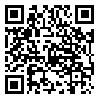Background: Occupational respiratory exposure with the hazardous lead to the onset of various complications in man. Screening of the labors in the manufacturing companies is the main procedure of controlling the incidence of such problems. In this study we aimed to evaluate the spirometry indices in the labors at the school equipments manufacturing factory in Sari, Iran and investigate the frequency of abnormal spirometry parameters, and an early identification of labors at risk of pulmonary diseases. Methods: In this descriptive study, all of the 133 male workers at risk of pulmonary exposure to hazardous air dusts were taken for the study by census method. After clinical examination and filling the provided questionnaire, the pulmonary function tests by spirometry based on the American Thoracic Association (ATA) in the subjects under study were performed. The Forced Expiratory Volume in First Second, Forced Vital Capacity (FEV1, FVC) and the FEV1/ FVC ratio were recorded. Results: The clinical symptoms indicating the pulmonary conditions were not observed in any of the subjects under study but the data of spirometry of the subject separately indicated reduced of FVC criteria in five cases, and in two of them reduction of both FEV1 and FVC indices, compared to the standard levels was observed. Insignificant difference between the criteria of spirometry and body mass index (BMI), smoking, the workplace and working experience was observed. Conclusion: Though no relation was observed between spirometry criteria disorders and smoking, work experience and workplace, but in seven cases spirometry indices disorder without clinical symptoms was observed. These subjects identified as the risk individuals.
Received: 2010/01/6 | Accepted: 2010/03/7 | Published: 2011/03/15
| Rights and Permissions | |
 |
This work is licensed under a Creative Commons Attribution-NonCommercial 4.0 International License. |


